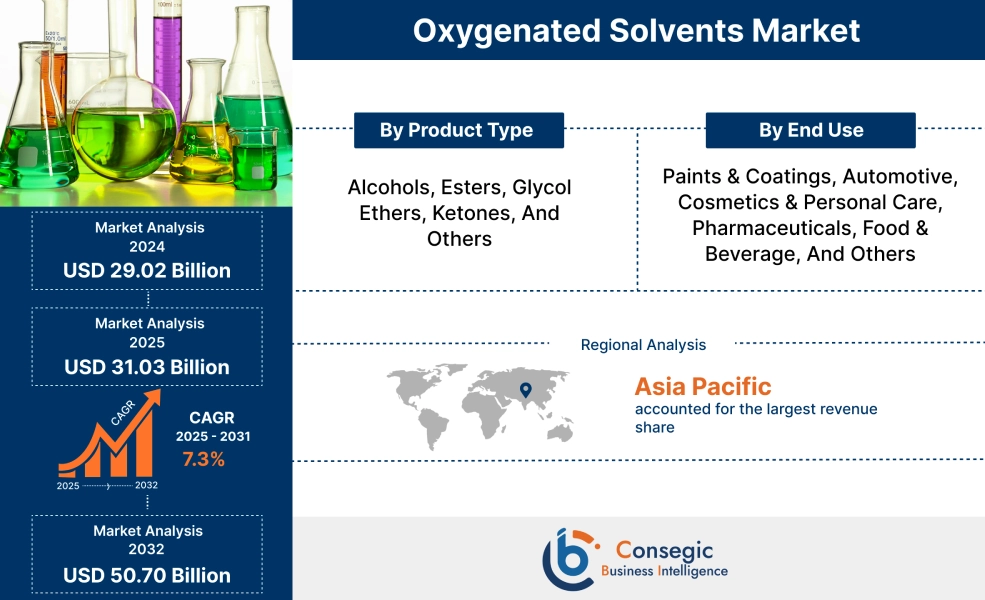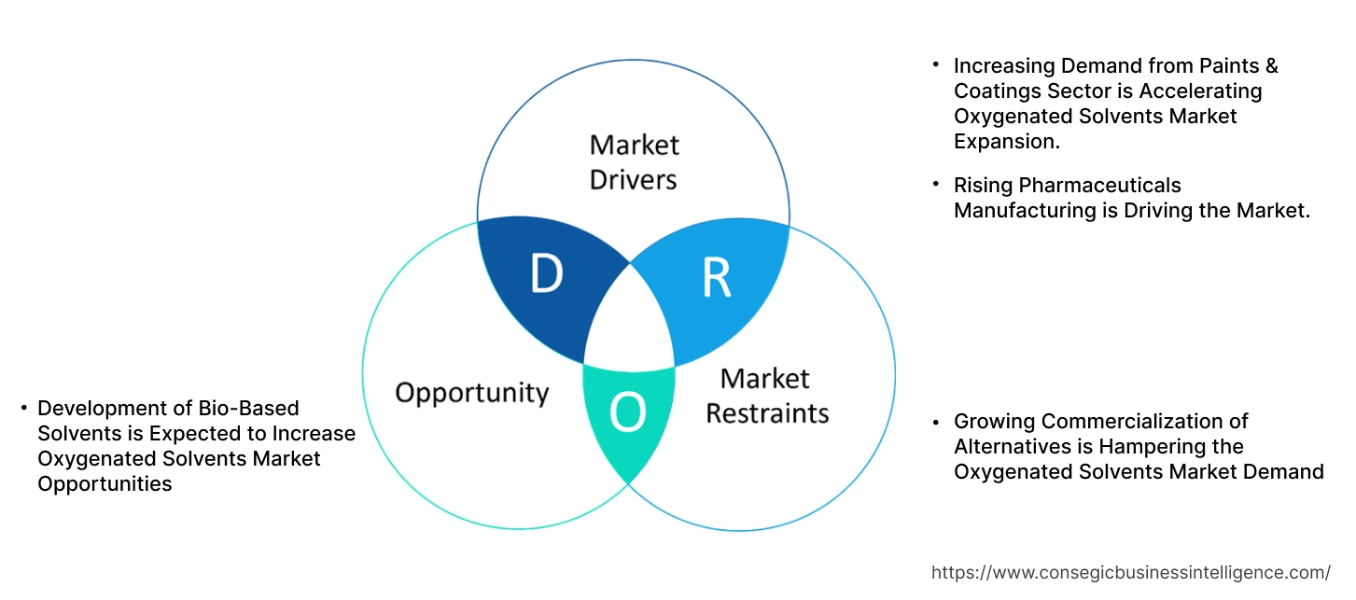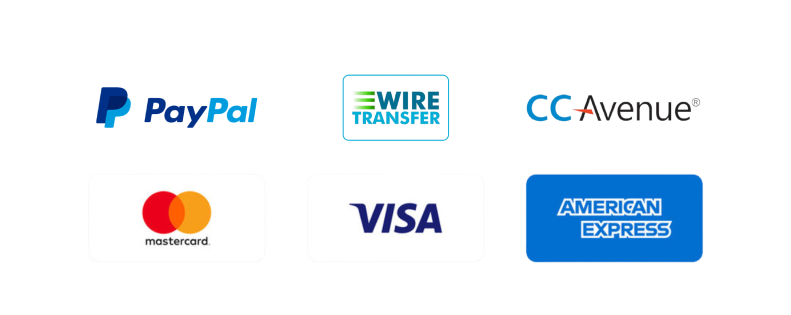Oxygenated Solvents Market Size:
Oxygenated Solvents Market size is growing with a CAGR of 7.3% during the forecast period (2025-2032), and the market is projected to be valued at USD 50.70 Billion by 2032 from USD 29.02 Billion in 2024. Additionally, the market value for the 2025 attributes to USD 31.03 Billion.
Oxygenated Solvents Market Scope & Overview:
Oxygenated solvents are chemical solvents. They contain carbon, hydrogen, and oxygen atoms in their structure. They are known for their high purity, good solvency, and often miscible with water. They offer lower toxicity compared to hydrocarbon solvents. They are categorized into several types. This includes alcohols (ethanol, isopropanol, and others), esters (ethyl acetate, butyl acetate, and others), ketones (acetone, MEK, and others), glycol ethers (ethylene glycol ethers, propylene glycol ethers, and others), and others. They find usage in multiple industries. This includes paints & coatings, pharmaceuticals, cosmetics & personal care products, and food & beverage among others. They have a superior ability to dissolve, suspend, and extract a wide array of substances. This makes them vital across manufacturing processes globally.
Oxygenated Solvents Market Dynamics - (DRO) :
Key Drivers:
Increasing Demand from Paints & Coatings Sector is Accelerating Oxygenated Solvents Market Expansion.
Oxygenated solvents are widely used in paints and coatings to dissolve various components. It helps in achieving the desired consistency for application. Moreover, they are also used to reduce viscosity and improve flow. This makes its paints and coatings easier to apply and handle. They also influence drying times. This prevents premature skinning and excessively long drying. Rapid urbanization and infrastructure development have led to an increase in demand for paint & coating, thus requiring these solvents for multiple applications.
For instance,
- According to ORIM Advisors, the Indian paint industry demonstrated strong growth between FY19 and FY23, achieving a CAGR of 14%–15%, thus positively impacting oxygenated solvents market trends.
Overall, increasing demand for paints & coatings is significantly boosting the oxygenated solvents market expansion.
Rising Pharmaceuticals Manufacturing is Driving the Market.
Oxygenated solvents are used in the synthesis of active pharmaceutical ingredients (APIs). They are used to selectively dissolve and extract target compounds from complex mixtures or natural sources. They also aid in purifying drug substances by selectively dissolving impurities. This ensures the high purity levels required for medicines. Moreover, they are utilized as mobile phases in chromatographic separation techniques for the analysis and purification of drug compounds. The rising demand for drugs has pushed manufacturers to increase their pharma production capacity, thus requiring these solvents as a medium.
For instance,
- In 2024, Ferring Pharmaceuticals opened a new manufacturing hub in Finland, thus positively impacting the oxygenated solvents market trends.
Thus, the rising pharmaceutical manufacturing is accelerating the global oxygenated solvents market growth.
Key Restraints:
Growing Commercialization of Alternatives is Hampering the Oxygenated Solvents Market Demand.
The market faces competition from other substitutes available in the market. For instance, water-based formulations use water as the primary solvent. They reduce VOC emissions and offer a safer alternative for many applications such as paints, coatings, and cosmetics. Moreover, supercritical fluids are increasingly used in extraction, cleaning, and coating processes. They are also these non-toxic and non-flammable alternatives. Additionally, solvent-free/hot melt technologies eliminate the need for solvents. This improves safety and production efficiency. Hence, the growing commercialization of substitutes is hampering the oxygenated solvents market demand.
Future Opportunities :
Development of Bio-Based Solvents is Expected to Increase Oxygenated Solvents Market Opportunities.
Traditional solvents have a negative impact on the environment such as pollution and contribution to greenhouse gas emissions. Governments and regulatory bodies are increasingly implementing rules and standards to reduce the use of hazardous chemicals. They are promoting the use of eco-friendly alternatives, including bio-based versions of these solvents. These versions reduce reliance on fossil fuels and promote the use of renewable resources. Consequently, manufacturers are focusing on developing bio-based solvents.
For instance,
- In 2024, Verbio started commercial production of corn-based ethanol at its biorefinery facility in Iowa, United States. This creates potential for the market.
Overall, the development of bio-based solvents is expected to increase the oxygenated solvents market opportunities.
Oxygenated Solvents Market Segmental Analysis :
By Product Type:
Based on product type, the market is categorized into alcohols, esters, glycol ethers, ketones, and others.
Trends in Product Type:
- There is a growing trend in the use of ethanol and butanol derived from renewable resources. This is driven by environmental regulations and sustainability initiatives.
- The adoption of glycol ethers in low-VOC paints and coating is a key trend.
The alcohols segment accounted for the largest market share in 2024.
- Alcohol constitutes a significant segment within the market, characterized by the presence of a hydroxyl (-OH) functional group.
- Some common examples of oxygenated alcohols include methanol, ethanol, and isopropanol (IPA) among others.
- These compounds offer high solvency for both polar and non-polar substances, presenting water miscibility and diverse evaporation rates.
- Moreover, the increasing industry emphasis on bio-based solvents, specifically bioethanol and bio-butanol derived from renewable resources is contributing to segment revenue.
- For instance, in 2022, Clariant successfully commenced commercial production of its sunliquid cellulosic ethanol at a new plant located in Podari, Romania.
- Overall, as per the market analysis, the development of bio-based solvents is driving a segment in the oxygenated solvents market growth.
The ketones segment is expected to grow at the fastest CAGR over the forecast period.
- Ketones are organic compounds containing a carbonyl group (C=O) bonded to two other carbon atoms.
- Prominent examples of ketones include acetone, methyl ethyl ketone, and methyl isobutyl ketone (MIBK).
- These solvents are characterized by their strong solvency power, fast evaporation rates, and ability to dissolve a wide range of resins, waxes, and fats.
- Ketones are highly effective in paints and coatings, where their fast evaporation rates are crucial for quick-drying formulations. They also see increasing demand in the pharmaceuticals for synthesis and purification, and in the personal care sector, particularly in nail polish removers and fragrances.
- According to market analysis, the aforementioned factors will drive segmental share for the upcoming years.
By End User:
Based on end-use, the market is categorized into paints & coatings, automotive, cosmetics & personal care, pharmaceuticals, food & beverage, and others.
Trends in the End-Use
- There is a growing trend of using waterborne coating in order to reduce VOC emissions, which is gaining traction.
- The growing EV market requiring specific coatings and adhesives for battery components is rising.
The paints & coatings segment accounted for the largest market share of 37.41 in 2024.
- The paints & coatings sector holds prominence, driven by an increase in the construction sector along with a focus on eco-friendly, low-VOC formulations.
- The growth in electric vehicles requires specialized coating and the solvents required for their high-quality finishes.
- They effectively dissolve a wide range of resins such as acrylics, epoxies, and urethanes among others. This is crucial for creating stable and homogeneous paint formulations.
- They also allow formulators to precisely adjust the paint's viscosity. This ensures optimal flow and leveling properties for various application methods like brushing, spraying, or rolling.
- Across all these segments, focus on performance and environmental sustainability is contributing to the adoption of greener solvent solutions.
- Overall, as per the market analysis, the aforementioned factors are driving the segment in the oxygenated solvents industry.
The cosmetics & personal care segment is expected to grow at the fastest CAGR over the forecast period.
- Oxygenated solvents are used in these formulations due to their ability to stabilize ingredients, solvency, and others as opposed to other solvent types.
- The cosmetics and personal care segments are primarily driven by factors such as the rise in disposable incomes along with changing lifestyles. This is primarily observed in the emerging economies.
- There is an increase in the willingness of consumers to spend on a wider range of beauty products.
- For instance, according to Cosmoprof Worldwide Bologna, the beauty market is expected to experience a growth rate of 9% by 2028, with the U.S. leading the market followed by China, creating potential for segment share.
- Thus, according to oxygenated solvents market analysis, the growing need for personal care & cosmetic products will drive the segment for the forecasted years.
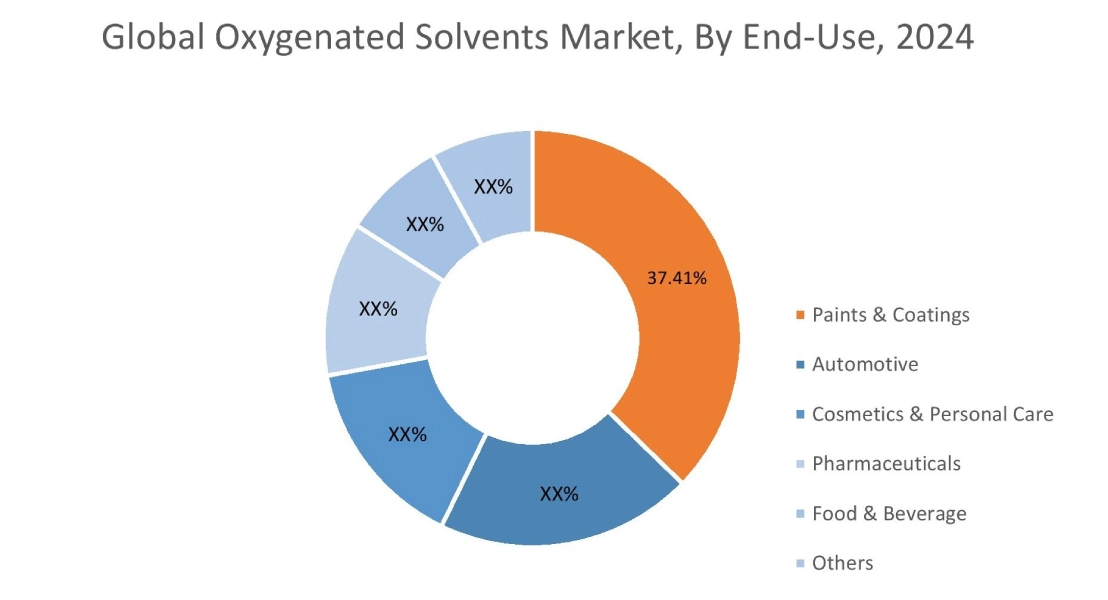
Regional Analysis:
The regional segment includes North America, Europe, Asia Pacific, the Middle East and Africa, and Latin America.
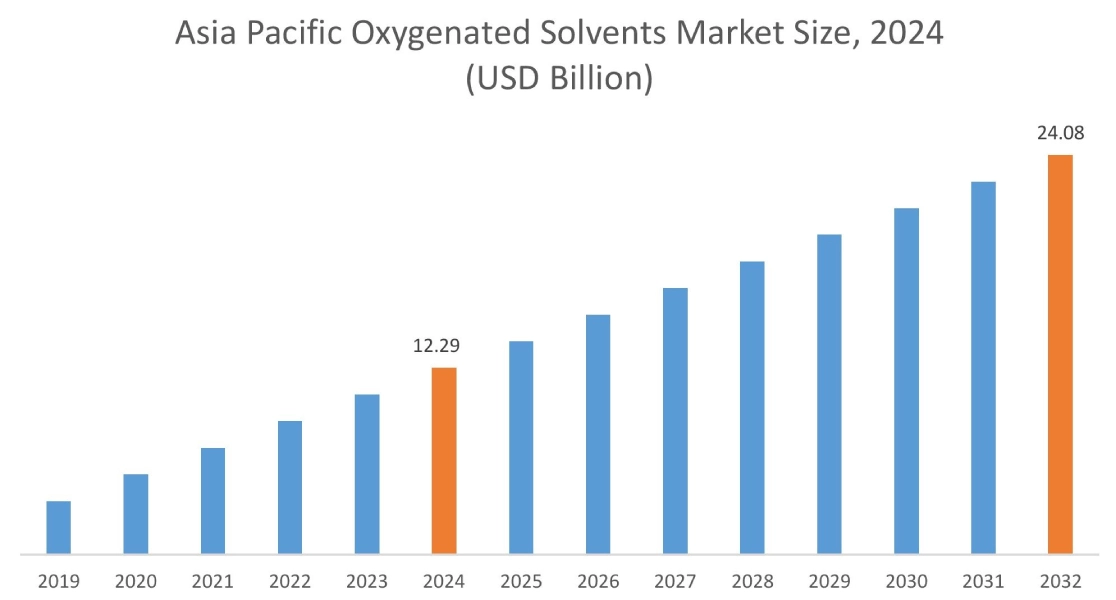
In 2024, Asia Pacific accounted for the highest oxygenated solvents market share at 42.34% and was valued at USD 12.29 Billion and is expected to reach USD 24.08 Billion in 2032. In Asia Pacific, the China accounted for the oxygenated solvents market share of 40.09% during the base year of 2024. The region is a powerhouse in the production of paints and coatings. This is driven by growing infrastructure developments and urbanization.
For instance,
- According to Senbaoli Chemical, China’s coating output reached 35.77 million tons, an increase of 4.5% in the year 2023, when compared to the previous year.
Oxygenated solvents are used to dissolve various resins and pigments. This ensures the consistency and flow properties necessary for smooth application of paints and coatings. They also enhance the durability, gloss, and aesthetic appeal of the coated surfaces. Overall, the growing paint and coatings output is driving the market in the region.
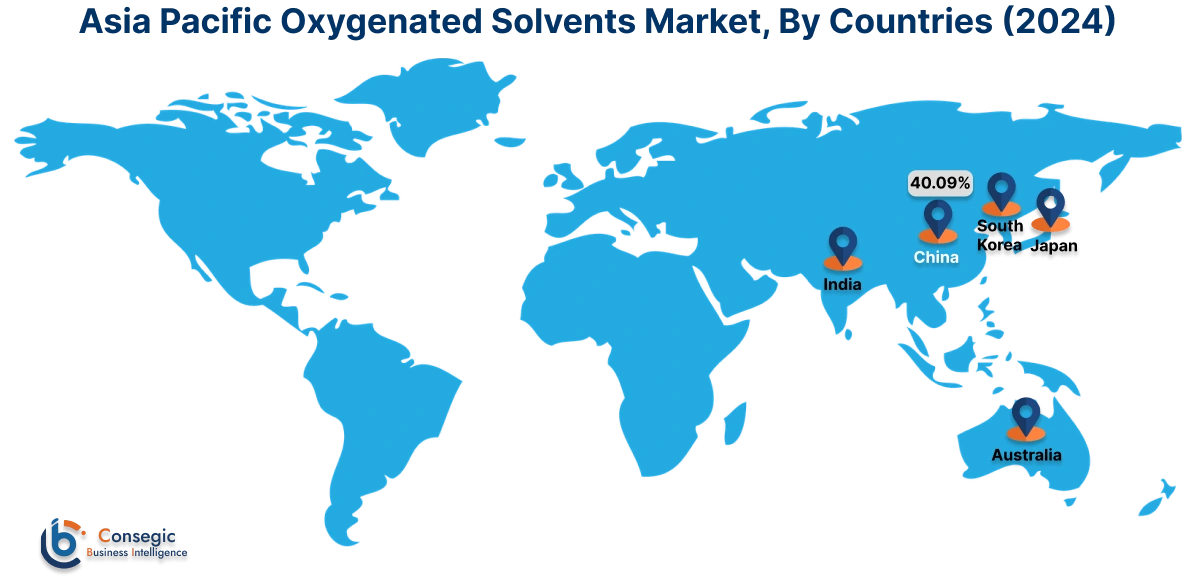
In Europe, the oxygenated solvents market is experiencing the fastest growth with a CAGR of 5.5% over the forecast period. The region is focusing on developing bio-based versions of the solvents. This is driven by stringent environmental regulations. The European Union is promoting to reduction of fossil fuel dependency and minimizing VOC emissions. Moreover, high consumer awareness pushes industries to adopt greener alternatives. These bio-based versions such as bioethanol and bio-butanol among others offer environmental benefits. They reduce toxicity and carbon footprints while increasing biodegradability. European manufacturers are investing heavily in R&D and production capabilities for these bio-based solvents.
North America’s oxygenated solvents market analysis indicates that several key trends are contributing to its growth in the region. The region is experiencing a robust increase in the pharmaceutical sector. This is driven by rising chronic diseases, innovative therapies, increasing healthcare spending, and government investment in R&D. Oxygenated solvents are critical components in pharmaceutical production. They are critically used as mediums for synthesizing APIs. This ensures precise chemical transformations. Moreover, they are vital for extraction and purification processes. In these processes, they selectively dissolve and help in isolating desired compounds. They also find usage in formulation. This contributes to the stability and delivery of various drug products.
The Middle East and Africa (MEA) market analysis indicates that there is an expanding cosmetics and personal care sector in the region. This is driven by disposable incomes, increasing urbanization, and a strong cultural emphasis on personal grooming. There is also self-awareness about the importance of appearance in social gatherings and corporate. This has led to an increase in sales of skincare and cosmetics products. Solvents containing oxygen in their molecules are used in fragrances, oils, and active ingredients. This ensures product stability and uniform distribution. They contribute to the texture and sensory experience of products such as lotions and creams. This enables the effective delivery of active compounds.
Latin America's region creates potential for the market. The region is experiencing fast growth in the food and beverage sectors. This is driven by evolving consumer preferences, urbanization, and changing lifestyles which has led to an increase in the need for packaged foods, functional foods, sports drinks, and on-the-go options among others. Solvents containing oxygen in their molecules are primarily used in extraction processes. This includes extracting oils and fats for margarine and isolating natural aromas from botanicals. They also act as processing aids and carriers for flavorings. This ensures consistency and stability in final products. This continuous innovation and expansion directly translate into a steady need for high-quality of these solvents.
Top Key Players and Market Share Insights:
The Oxygenated Solvents market is highly competitive with major players providing products to the national and international markets. Key players are adopting several strategies in research and development (R&D) and product innovation to hold a strong position in the global Oxygenated Solvents market. Key players in The Oxygenated Solvents industry include-
- BASF SE (Germany)
- OXEA GmbH (Germany)
- Arkema Group (France)
- Mitsubishi Gas Chemical (Japan)
- Solvay SA (Belgium)
- Dow Inc. (United States)
- LyondellBasell B.V. (Netherlands)
- Royal Dutch Shell Plc (United Kingdom)
- ExxonMobil Corporation (United States)
- INEOS Group (United Kingdom)
Recent Industry Developments :
- In 2024, Mitsubishi Gas Chemical (MGC) began producing bio-methanol at its Niigata plant, using biogas (sewage gas) as a feedstock.This bio-methanol, which is produced from sewage gas, is intended for use as a carbon-neutral fuel and a sustainable chemical feedstock.
Oxygenated Solvents Market Report Insights :
| Report Attributes | Report Details |
| Study Timeline | 2019-2032 |
| Market Size in 2032 | USD 50.70 Billion |
| CAGR (2025-2032) | 7.3% |
| By Product Type |
|
| By End Use |
|
| By Region |
|
| Key Players |
|
| North America | U.S. Canada Mexico |
| Europe | U.K. Germany France Spain Italy Russia Benelux Rest of Europe |
| APAC | China South Korea Japan India Australia ASEAN Rest of Asia-Pacific |
| Middle East and Africa | GCC Turkey South Africa Rest of MEA |
| LATAM | Brazil Argentina Chile Rest of LATAM |
| Report Coverage |
|
Key Questions Answered in the Report
How big is the Oxygenated Solvents market? +
In 2024, the Oxygenated Solvents market is USD 29.02 Billion.
Which is the fastest-growing region in the Oxygenated Solvents market? +
Europe is the fastest-growing region in the Oxygenated Solvents market.
What specific segmentation details are covered in the Oxygenated Solvents market? +
Product Type and End-Use segmentation details are covered in the Oxygenated Solvents market.
Who are the major players in the Oxygenated Solvents market? +
BASF SE (Germany), Dow Inc. (United States), LyondellBasell B.V. (Netherlands), Royal Dutch Shell Plc (United Kingdom), ExxonMobil Corporation (United States), and INEOS Group (United Kingdom) are some major players in the market.
